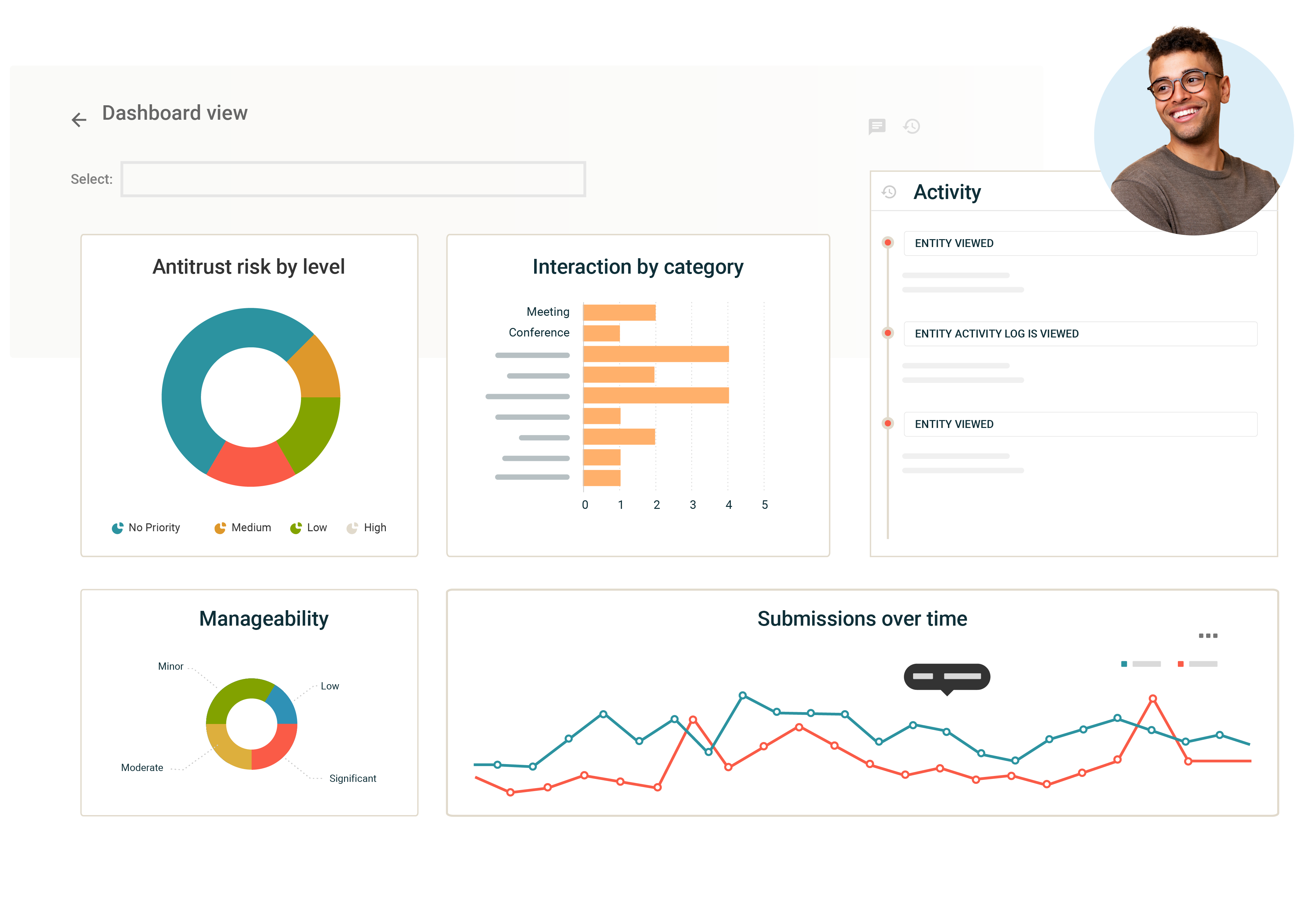Regulations
Compliance Solutions for the UK Modern Slavery Act
Benefit from a centralized, risk-based approach to compliance with Anti-slavery and Human Trafficking Regulations, including the UK Modern Slavery Act. Gain a thorough understanding of your overall risk posture regarding modern slavery and human trafficking, and operate with the confidence that you have robust and effective procedures in place.
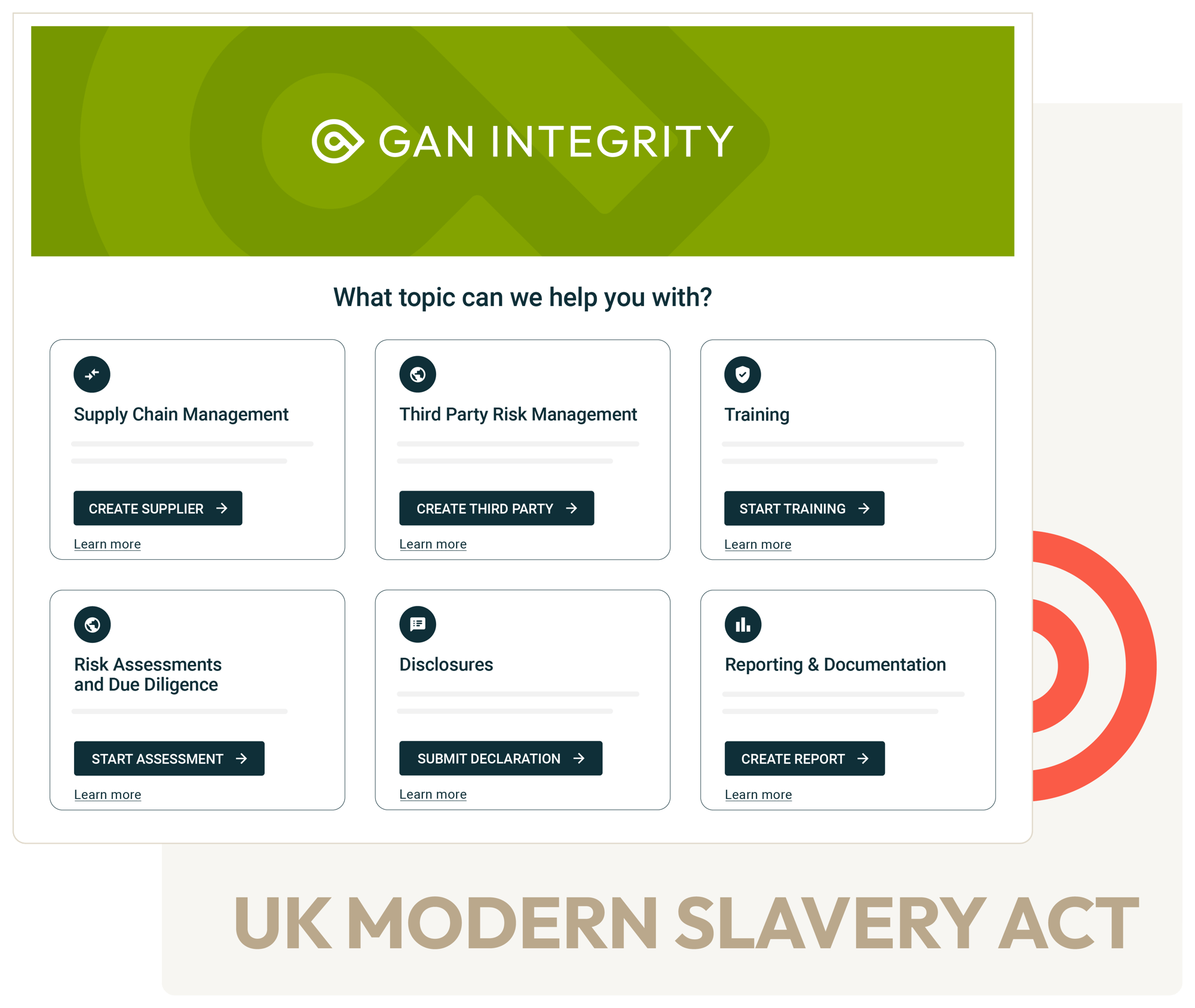
Why GAN Integrity
GAN Integrity is how compliance teams get the tools and expertise to stay ahead of ESG risk. With less effort but more reach, you finally get a better way to do your good work.
See everything – Gain a comprehensive view of your modern slavery and human trafficking risks in one centralized platform.
Adapt to anything – Utilize a dynamic solution that adapts to regulatory changes and evolves with your program.
Get all the help you need – Receive dedicated support from GAN Integrity’s team of experts.
Understanding the UK Modern Slavery Act 2015
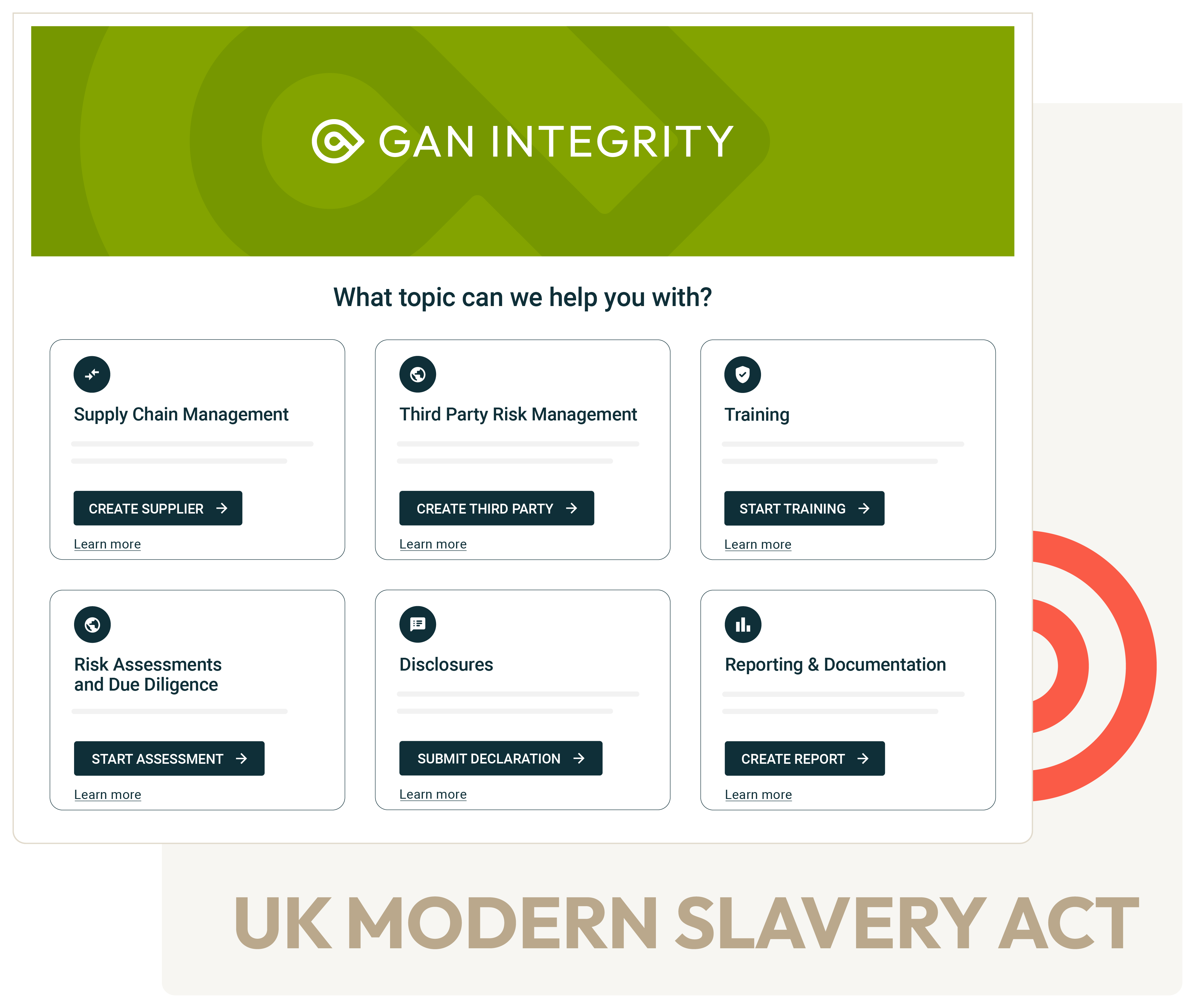
The UK Modern Slavery Act of 2015 is a landmark legislation aimed at combating modern slavery and human trafficking. It requires businesses operating in the UK to disclose the steps they have taken to ensure that slavery and human trafficking are not taking place in their operations and supply chains. The Act applies to all companies with an annual turnover of £36 million or more that do business in the UK.
Under this Act, companies are expected to produce an annual modern slavery statement, detailing their efforts to prevent modern slavery in their business and supply chains. This statement must be approved by the board of directors and signed by a director.
What Constitutes Modern Slavery Under the UK Modern Slavery Act?
The Act defines modern slavery as the exploitation of individuals through coercion, threats, or deception, depriving them of their freedom. This includes forced labor, human trafficking, and servitude.
Key Offenses Under the Modern Slavery Act:
- Holding a person in slavery or servitude
- Requiring a person to perform forced or compulsory labor
- Arranging or facilitating the travel of a person with a view to their exploitation (human trafficking)
The Importance of Compliance With The UK Modern Slavery Act
Although failing to publish the annual modern slavery statement is not currently a criminal offense and carries no direct financial penalty, the UK Secretary of State can seek an injunction to compel organizations to comply. The practical effect of this power is primarily to generate negative publicity for non-compliant organizations.
Implementing a Modern Slavery Statement
The UK Modern Slavery Act requires companies to publish an annual modern slavery statement. This statement should include:
Organization's Structure: Details of the business and supply chains.
Policies in Relation to Slavery and Human Trafficking: Outline policies developed to prevent modern slavery.
Due Diligence Processes: Steps taken to assess and manage risks in the supply chain.
Risk Assessment and Management: Description of identified risks and measures to mitigate them.
Effectiveness in Combating Slavery: Metrics and methods to evaluate the effectiveness of anti-slavery actions.
Training: Training provided to employees on modern slavery and human trafficking.
GAN Integrity for UK Modern Slavery Act Compliance
GAN Integrity’s platform is designed to support companies in maintaining robust ESG compliance programs, including anti-human slavery and trafficking.
Policy Management
Manage approvals, distribution, and attestation of policies, along with centralized portals for easy access to the latest policies and procedures. Capabilities include:
- Regulatory change management: Identify policies that require updates and timely distribution to employees in response to regulatory changes.
- Automated workflow: Optimize the review and approval process for policies, operating procedures, and work instructions with automated workflows.
- Comprehensive reporting and documentation: Maintain a full audit trail and generate detailed reports to provide clear evidence of compliance to stakeholders and regulators
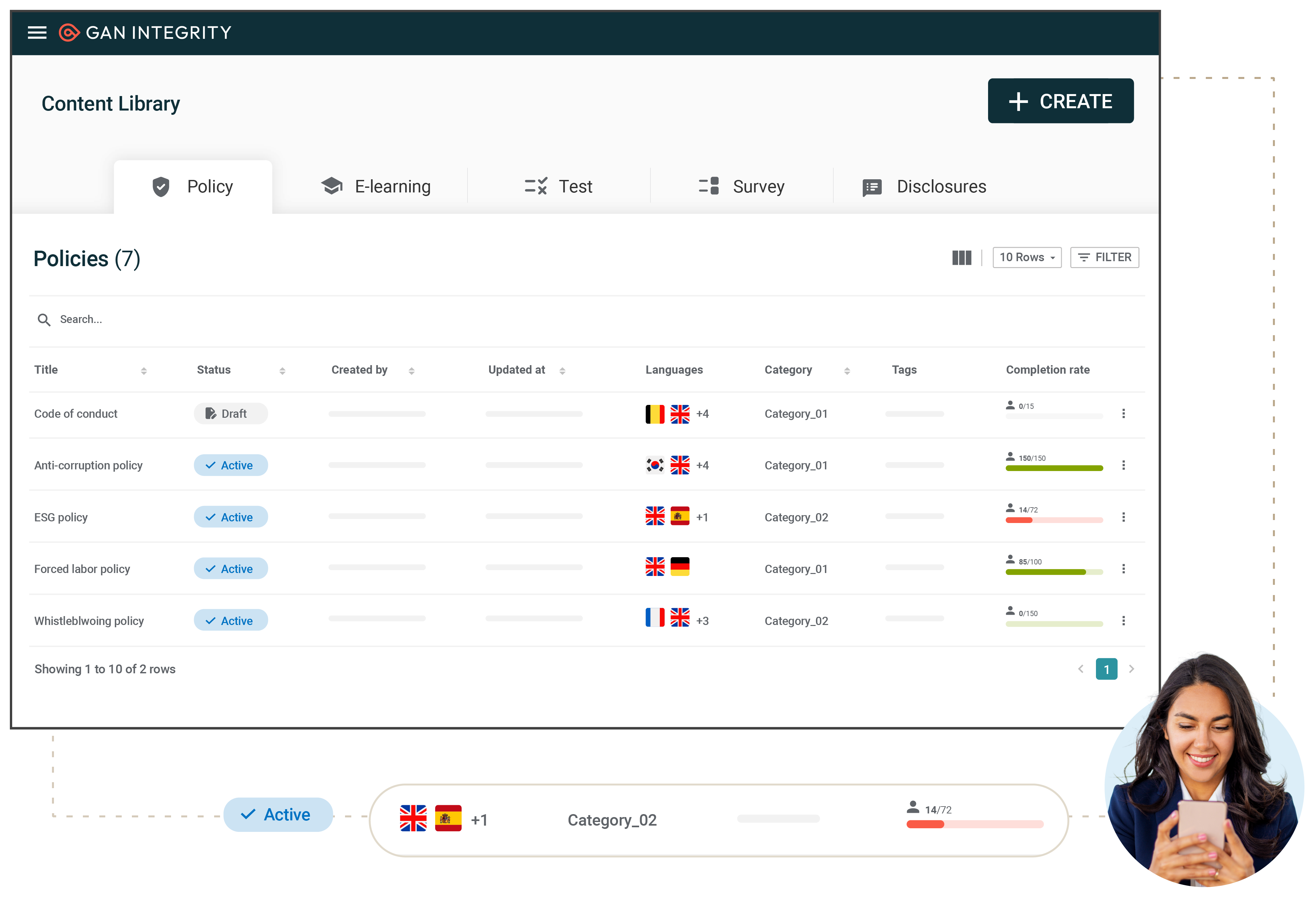
Third-Party Risk Management
Manage risks associated with third parties and assess these against relevant laws and organizational standards. Capabilities include:
- Lifecycle management: Automated workflows for onboarding, risk assessment, issue management, monitoring and off-boarding.
- Integrated due diligence: Initial and ongoing screening of third parties for sanctions, adverse media, forced labor, ESG and more.
- Reporting and analytics: Executive dashboards and reports: Consolidate third party data to identify risks and potential exposure to your organization
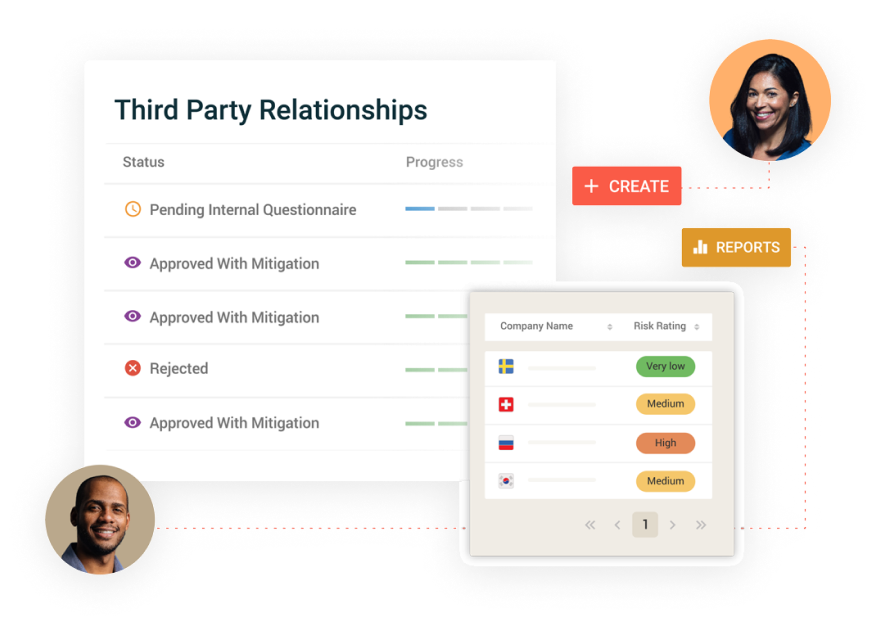
Training
Deliver training and awareness compliance content to employees and key stakeholders. Capabilities include:- User governance: Automatically enroll new employees in the right programs and seamlessly roll out new training initiatives.
- Embedded reporting and analytics: Customizable dashboards to track program performance and proactively address gaps.
- Risk-based training and communications: Segment employees based on risk profiles to tailor the content and frequency of training and communications.
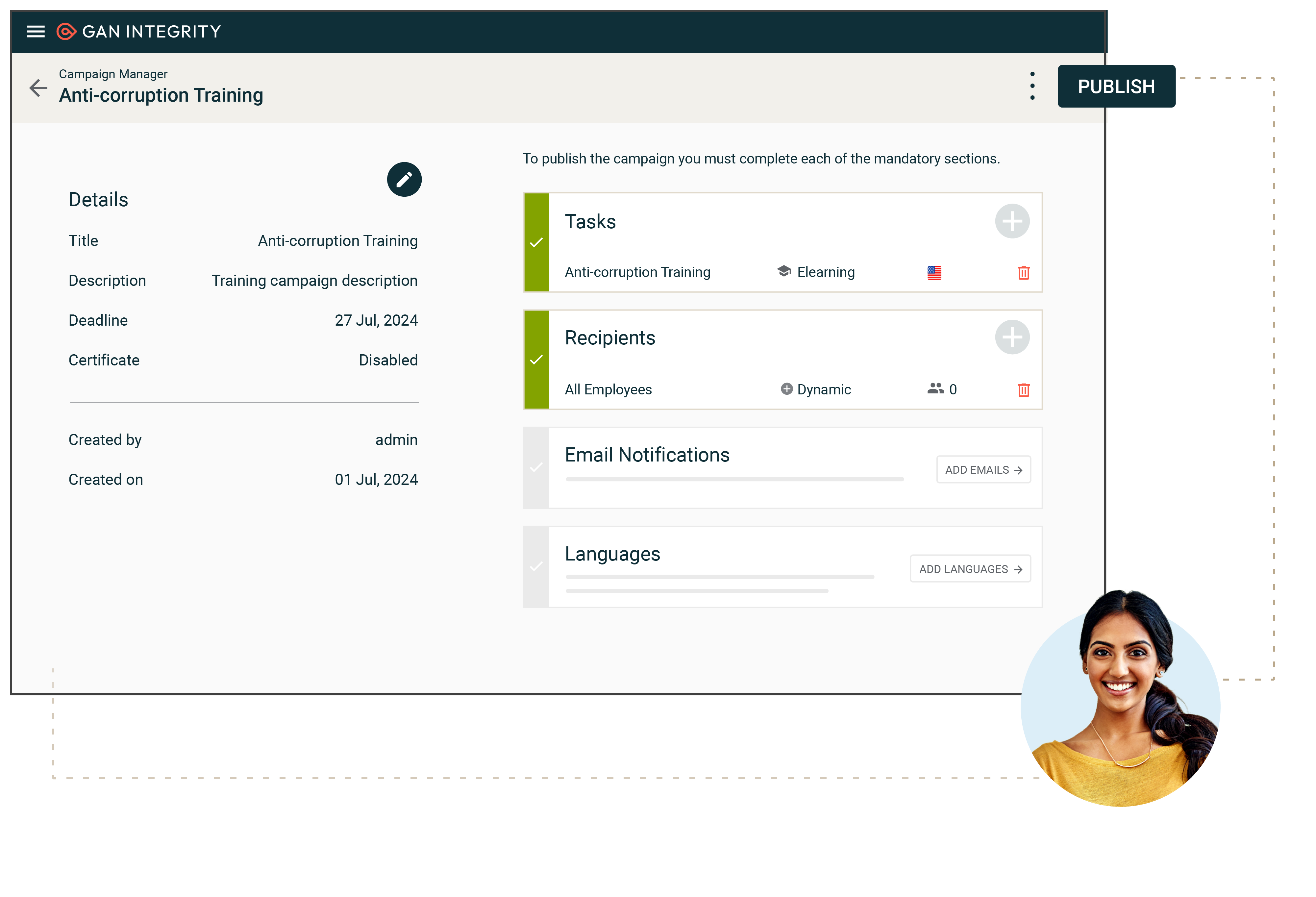
Supply Chain Due Diligence
Enhance supply chain risk management by consolidating processes, identifying and mitigating risks, and integrating data from various risk intelligence and business systems. Capabilities include:
- Automated risk assessments and continuous monitoring: Monitor suppliers continuously for adverse media, sanctions lists, PEP lists, forced labor, and ESG (Environmental, Social, and Governance) issues.
- High-risk supplier identification and management: Identify high-risk suppliers, manage them effectively, and track actions and mitigations to ensure compliance.
- Integrated due diligence assessments: Perform thorough due diligence across your business operations and workflows for seamless integration and enhanced efficiency.
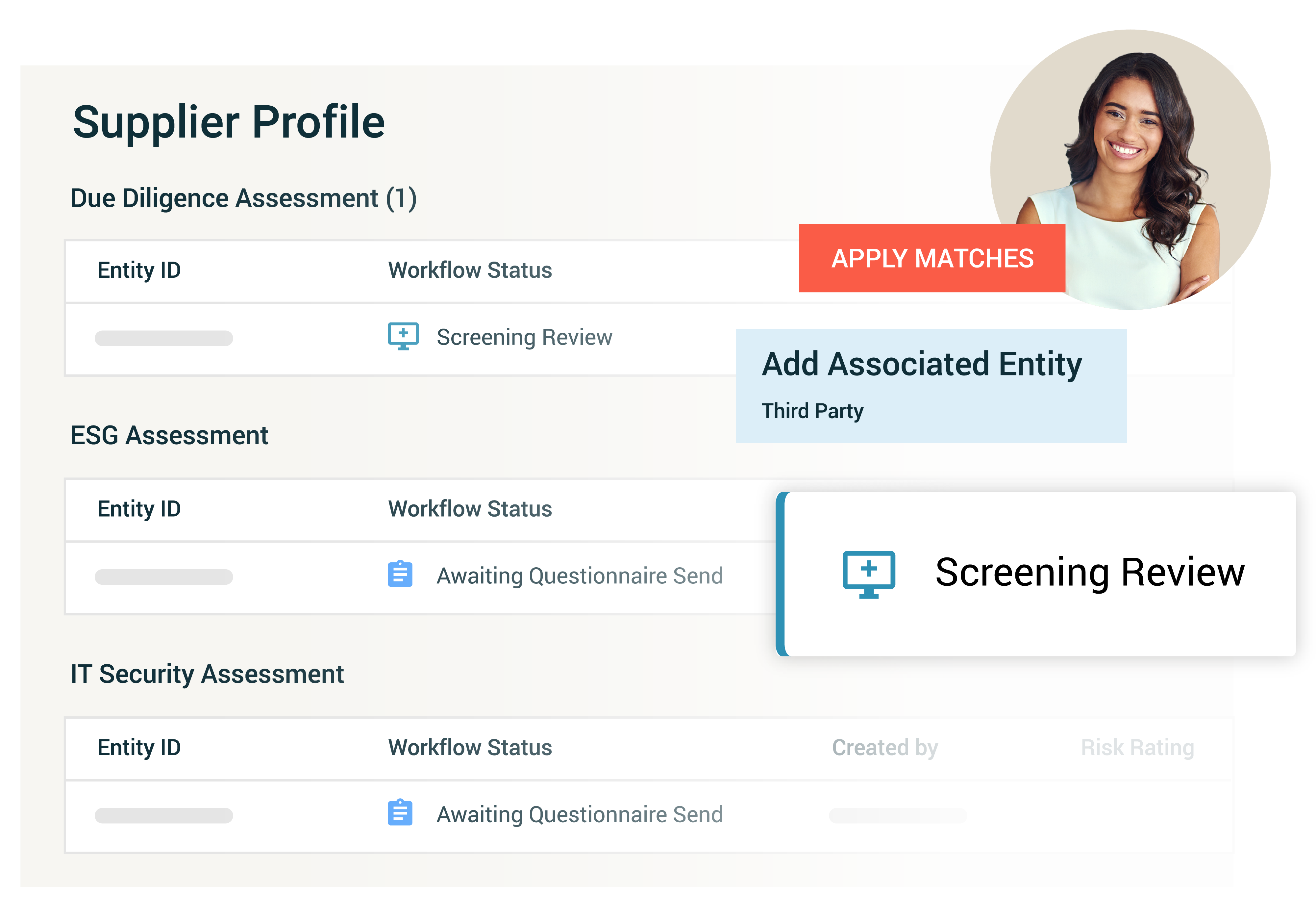
Reporting and Documentation
See everything across your compliance program, and generate reports and dashboards to demonstrate compliance program effectiveness to stakeholders and evidence to regulators. Capabilities include:
- Reporting and analytics: Executive, role-based dashboards to review the effectiveness of your compliance program initiatives.
- Evidence-based compliance: Maintain an auditable trail of all activity with the platform’s integrated and automated audit log.
- Compliance insights: See risk trends and patterns within your program, including third-party and supply chain risk, policies and disclosures.
